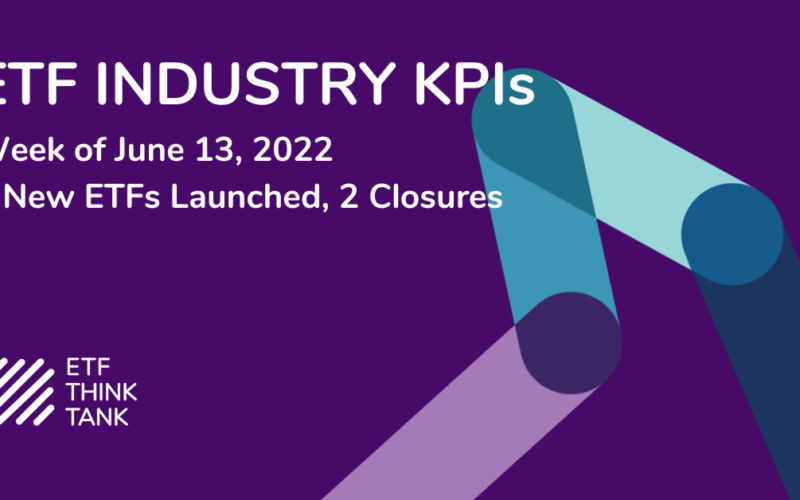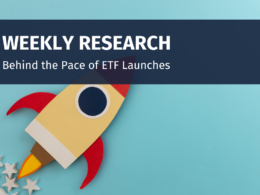It’s been difficult to stomach the recent market action. Unless red is your favorite color and wild price volatility your thrill, this hasn’t been an easy market to navigate.
We look at data and seek historical precedence to keep price action in perspective, but we also lose sleep and panic as mounting losses in portfolios – all of that red – introduce cracks to our long-term financial goals.
In some ways we had grown accustomed to Wall Street feeling like Easy Street, where hot thematic plays captured timely trends while growth raced higher with or without fundamentals to back it up, all fueled by easy money, fast money, lots of money.
But 2022 has been a rough year. It looks like the era of risk for risk’s sake may have come to an end. We spend most of our time now worrying about the “flations” – inflation, deflation, stagflation – and the loss of purchasing power, and the possibility of recession.
Stroll through the latest headlines across major publications and you quickly get a sense that good market news is indeed scarce. Just on Tuesday:
- The U.S. is Likely to Fall into Recession in 2023, says Survey of Economists
- Wall Street Holds Calls to “Buy the Dip” as Bear Market Hits
- Crypto Exchange Coinbase to Cut Almost a Fifth of its Staff
- Bond Decline Continues, With No End in Sight
What’s worse is that it’s not just the aggressive-growth-types and risky crypto assets that are faltering. In the current environment, the vanilla, boring core part of portfolios is also feeling the pinch as both stocks and bonds struggle to find a footing.
Look at the S&P 500 year-to-date performance by sector to get a sense of the pain:

Stay Invested, They Say
So far this year, we’ve talked a lot about the rotation into value stocks at the expense of growth names. We’ve looked for refuge in the agricultural commodities and oil/energy segments, which stand among the year’s very few winners.
But in truth, there have been few places to hide.
Conventional wisdom keeps reminding us that staying invested is better than picking an exit, because timing the market is folly. Hartford Funds recently shared research that quantified what that looks like in a hypothetical portfolio, which we share here for illustration. (You can read their take in its entirety here):

Hartford is hardly alone. There are different variations of this data displayed in different forms throughout the web. The chatter on Twitter echoes this sentiment:


If we prescribe to this “wisdom,” and ride out this market, perhaps low vol investing can help smooth out the ride. Low vol stocks are defined by their lower beta relative to their respective broader segment. They often underperform in strong bull markets, but they can offer some respite in down markets.
The Low Vol Factor
There are different takes on how low vol came to be a recognized factor. Craig Lazzara, Managing Director at S&P Dow Jones Indices, is one of the experts on factor investing, and he shares here two takes on low vol’s origin story:
The first is anchored on the traditional capital asset pricing model (CAPM), which says that a stock’s return should be proportional to its beta.
If you consider factors such as value or size (small cap), for example, they are risk premia that reward you for taking on a particular risk. But in the case of low vol, that risk/reward dynamic doesn’t quite fit this story because low volatility by definition is less risky than vanilla.
However, CAPM says that the most efficient portfolio is owning the entire market. “If you to minimize risk, you hold the market portfolio and cash. If you want additional risk, you hold the market portfolio with leverage.” It’s in the pursuit of leverage that low vol ultimately can prove an overperformer. If you seek out primarily stocks with high beta – above 1 – in order to hit your target risk (the leverage), “you will help bid up the price of those stocks more than it should be relative to their risk, according to the CAPM, and therefore their return could be less overtime,” Lazzara says.
The second is anchored on what’s known as “the preference for lotteries.”
Classic economics suggests that no one would ever consider buying a lottery ticket because the expected value is negative – no one expects to win. If that were true, lotteries would not exist. But that’s not the case. “Why do people buy lottery tickets? Because they’re willing to risk a relatively small amount of money for the impossibility,” Lazzara says. “Translate that concept into investments, and the functional equivalent of a lottery ticket is a stock with high volatility.”
In this case, people are willing to risk and buy into a high volatility stock in the off chance that it becomes the next big winner. The chase for the next “Google” leads to excess demand for volatility for its own sake. The low volatility effect is then clear. “If you avoid these stocks that are systematically overvalued, either because of the preference for lotteries or because of leverage aversion, and they’re not mutually exclusive, you will benefit over time.”
We’ve been rewarding the lottery in recent years. But in 2022, we seem to have come face to face with the impossibility. In this scenario, it could be that low vol portfolios are ready for prime time. Numbers vary overtime, but low vol portfolios – as a general guidepost – can deliver upside capture of around 80% relative to the broader market, and downside capture of about 60-65%, Lazzara says.
Understanding Low Vol ETFs
Choices abound in this space. There are more than 20 low vol ETFs in the market, and the two most popular are SPLV ($10B in assets under management) and USMV ($26B in AUM).
While these ETFs are grouped in the same category, they are very different. Perhaps one way to think of their core difference is to think of pure low vol vs. optimized low vol.
SPLV is a pure take on the low vol factor. The fund owns the 100 least volatile stocks in the S&P 500. That’s its sole mandate. The mix of stocks is then weighted by volatility – the least volatile stock carries the most weight, meaning it has a bigger impact on overall performance. SPLV doesn’t care about sector tilts or staying in line with the broader market – it wants to capture the low vol factor as purely as it can within S&P 500 names.
USMV, on the other hand, is an optimized approach that picks large and mid-cap stocks from the MSCI USA Index, looking to create a portfolio of “minimum variance”, taking into account correlation between stocks as well as sector tilts, looking to keep the overall portfolio somewhat in line with the broader universe.
In practice, the resulting portfolios are nothing alike, and they perform differently in different market environments. In fact, there’s less than 50% overlap between the two ETFs.
Consider the current environment for defensive utilities vs. technology names, for example:
- SPLV is 25% allocated to utilities – its biggest sector exposure. Financials and consumer staples round out top 3 sector bets.
- USMV is 23% allocated to technology – its biggest sector exposure. Healthcare and consumer staples make up top 3.

Low Vol Likes Dispersion
Single stock and sector allocations matter for the path of returns, and the overall market environment does too. As Lazzara puts it, the more volatility the better for low vol funds (generally speaking).
“In periods of high dispersion, there is a lot of spread between the returns of individual stocks. If you think about factor returns and high dispersion years, the gap between low vol, value, size, any of them is much bigger than in lower dispersion environments. When dispersion is high, it typically means that volatility is high. And when the market is down, volatility is typically much higher than when the market is up. Low vol typically outperforms the market when the market is down, and volatility and dispersion are above average. Low vol will typically underperform when the market does well.”
Year-to-date, both funds are outperforming the broader market. SPLV is down 12% while the S&P 500 (as measured by SPY) is down 21% — that’s a 9-percentage-point outperformance. In 2021 calendar year when the market did well, SPLV trailed the S&P 500 by about 5 percentage
Year-to-date, both funds are outperforming the broader market. SPLV is down 12% while the S&P 500 (as measured by SPY) is down 21% — that’s a 9-percentage-point outperformance. In 2021 calendar year when the market did well, SPLV trailed the S&P 500 by about 5 percentage points: 23.9% vs. 28.9% in gains.
USMV tells a similar story. So far this year, the fund is down only 15%, but in 2021, USMV trailed the MSCI USA Index by about 6 percentage points: 20.8% in gains vs. 26.9%.
The data suggests both approaches should offer downside protection in down markets, as they have in the current year. But it’s also worth noting that whenever the market recovers, there’s a strong possibility – or likelihood – that USMV will do better than purely low vol SPLV. In a recovery, that optimization may be your friend.
“When the bounce comes, usually the stuff that’s been most beat up bounces the fastest, so low vol that still has some exposure in these sectors (technology) often do better. But with both, you get similar returns over a long period of time,” Lazzara says.
Money Chasing Protection for Now
A look at asset creations so far in 2022 suggests that, at least for now, investors have focused on downside risk mitigation (choosing pure low vol) rather than upside capture in the case of a market recovery (optimized min vol).
In the past month (as of June 1) as well as year-to-date, both funds have lost ground on performance, but USMV has also struggled to capture new money. SPLV has consistently attracted new assets:

SPLV vs. USMV in Pictures
To further compare these two approaches to capturing the low vol factor, here’s a quick look at how these ETFs stack up using our proprietary tools:

A look at holdings show USMV is a little more concentrated at the top:

Low volatility ETFs would fall into the category of factor funds, or smart beta funds. We calculate what you are actually paying for that so-called “smart” or unique parts of the ETF relative to the broader benchmark – in this case, the S&P 500.
Here we plot SPLV vs. SPY as well as USMV vs. SPY to analyze the cost of pursuing the low vol factor. (Note: Overlap is the percentage of holdings by weight that are identical in both funds.)


Assuming you are allocating $10,000 for an entire year and paying $0 in trading commission fees, you will be spending about $11 more to hold SPLV vs. USMV, and both will (obviously) come with a higher total cost of ownership than a similar allocation to SPY:

Conclusion
Investing in low volatility may not be exactly exciting because low vol isn’t a factor that’s seen as a great alpha generator. But it can serve a purpose in certain market environments, whether that’s offering some protection on the downside, or providing a smoother ride in turbulent markets, or even just giving you some peace of mind if volatility concerns you.
The good news is that the lineup of ETFs offering access to low vol today is broad and diverse, allowing you to be as tactical and as committed to the low vol factor as you see fit.
Disclosure
All investments involve risk, including possible loss of principal.
This material is provided for informational purposes only and should not be considered an individualized recommendation or personalized investment advice. The investment strategies mentioned may not be suitable for everyone. Each investor needs to review an investment strategy for his or her own particular situation before making any investment decision.
All expressions of opinion are subject to change without notice in reaction to shifting market conditions. Data contained herein from third party providers is obtained from what are considered reliable sources. However, its accuracy, completeness or reliability cannot be guaranteed.
Examples provided are for illustrative purposes only and not intended to be reflective of results you can expect to achieve.
The value of investments and the income from them can go down as well as up and investors may not get back the amounts originally invested, and can be affected by changes in interest rates, in exchange rates, general market conditions, political, social and economic developments and other variable factors. Investment involves risks including but not limited to, possible delays in payments and loss of income or capital. Neither Toroso nor any of its affiliates guarantees any rate of return or the return of capital invested. This commentary material is available for informational purposes only and nothing herein constitutes an offer to sell or a solicitation of an offer to buy any security and nothing herein should be construed as such. All investment strategies and investments involve risk of loss, including the possible loss of all amounts invested, and nothing herein should be construed as a guarantee of any specific outcome or profit. While we have gathered the information presented herein from sources that we believe to be reliable, we cannot guarantee the accuracy or completeness of the information presented and the information presented should not be relied upon as such. Any opinions expressed herein are our opinions and are current only as of the date of distribution, and are subject to change without notice. We disclaim any obligation to provide revised opinions in the event of changed circumstances.
The information in this material is confidential and proprietary and may not be used other than by the intended user. Neither Toroso or its affiliates or any of their officers or employees of Toroso accepts any liability whatsoever for any loss arising from any use of this material or its contents. This material may not be reproduced, distributed or published without prior written permission from Toroso. Distribution of this material may be restricted in certain jurisdictions. Any persons coming into possession of this material should seek advice for details of and observe such restrictions (if any).












